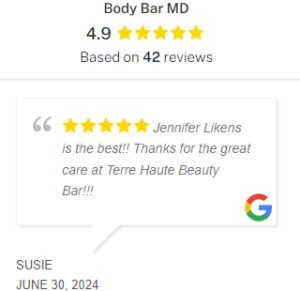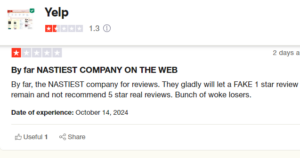Three Reasons Why a Medical Weight Loss Plan Works
Weight loss is challenging. It involves changing your lifestyle and can be hard to sustain long term. Maintaining that accomplishment can be challenging, even for those who manage to lose weight. A medical weight loss plan can be the key to success.
At Body Bar MD, Dr. Christy Kirkendol Watson assists patients with weight loss in Carmel and Terre Haute, IN. Keep reading to see the reasons why medical weight loss plans can be helpful to you.
What is a medical weight loss plan?
Long-term weight loss means changing your lifestyle long-term so your weight doesn’t rebound. It can be a life-long battle for many people. At Body Bar MD, Dr. Christy provides people with a medical weight loss plan. The plan includes methods of losing weight that is overseen by a doctor and is particularly suited for those who have trouble with weight loss because they need to learn more about their body and its unique nutritional needs.
Dr.Christy uses a unique device called the InBody 720 body measurement scanner, which measures things like muscle, fat, and water to learn more about your body composition. For example, it can tell you how much of your body is lean mass vs. body fat and the areas where your body fat is concentrated, and provides valuable information about which areas need to be targeted with diet and exercise.
The InBody 720 also establishes how much of your fat is visceral (the stubborn fat surrounding your organs) and how much protein is in your body, which indicates how much muscle mass you may be gaining over time as you get more active). You can even learn about the minerals in your body to see how well you maintain a good nutrient balance.
In other words, your overall weight doesn’t tell you much about the kind of fat your body holds (and can, therefore, potentially lose). Only an in-depth body composition scan can do that.
Another crucial part of Body Bar MD’s medical weight loss program is our partnership with Robard New Directions, which offers patients who need it direct access to weight management shakes. And the best part is that you’re not alone on your weight loss journey – the friendly and compassionate counseling and support we offer patients plays an integral role in their long-term success.
Three reasons why medical weight loss plans work for long-term results
People who have struggled to lose and keep off extra pounds often find that medical weight loss programs give them the missing tools for understanding their unique bodies and how to nourish them and stay healthy.
In addition to providing state-of-the-art technology and improving your overall health long-term, there are three reasons why medical weight loss plans work:
1. Medical weight loss plans customize a weight-loss plan to suit your needs instead of providing a one-size-fits-all set of regulations that can be hard to follow. State-of-the-art technology allows you to get an accurate picture of your unique body’s needs for weight loss.
2. They help patients achieve more dramatic weight loss than diet and exercise alone, even if you have an exercise/diet group or support system. There’s just no replacement for personalized medical advice.
3. We monitor you along the way, providing support and encouragement in one-on-one counseling sessions. This ensures that you’re on track, that the program is working for you, and that you’re safe and healthy along the way to your weight loss goals.
Learn about medical weight loss plans in Carmel and Terre Haute, IN
Wherever you’re at in your weight loss journey, Body Bar MD’s personalized medical weight loss program and our supportive staff can help curate a program that is ideal for you and your goals.
If you’re ready to get started, schedule a consultation with Dr. Christy Kirkendol Watson at our Carmel or Terre Haute, IN office.













